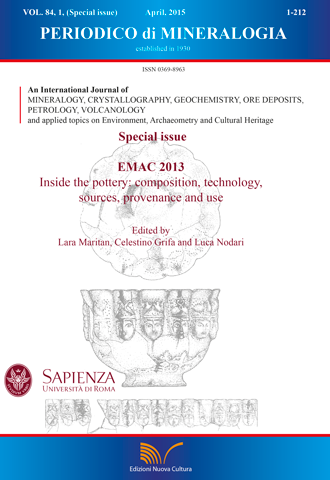Amphorae from the Late Antique city of Tarraco-Tarracona (Catalonia, Spain): archaeometric characterisation
DOI:
https://doi.org/10.2451/2015PM0010Keywords:
amphora, OM, XRF, XRD, Hispania, Late Antiquity.Abstract
This paper presents the results of the petrographic, mineralogical and chemical characterisation of Late Roman amphorae from a sixth-century context found in the Medieval Cathedral of Tarragona (Catalonia, Spain). This city had an intense port activity in Late Antiquity as the capital of Hispania Tarraconensis and, from the late 5th century, as an important Visigothic centre. A total of 41 amphora samples were analysed using a combination of techniques, including optical microscopy by thin-section analysis, X-ray fluorescence and X-ray diffraction, in order to obtain information on their provenance and technology. They comprise North African, South Hispanic and Eastern Mediterranean types, mainly dated to the 5th and 6th centuries. The analysis revealed a wide diversity of chemical-petrographic groups and subgroups, indicating the import of amphorae from several production centres, in many cases being possible to determine their particular provenance. A large part of the samples correspond to Tunisian amphorae, for which a general trend was found, since in a first period they are associated with workshops from the Zeugitana region but from the late 5th or early 6th centuries ―and during all the 6th century― they are imported almost exclusively from the Byzacena. For South Hispanic and Eastern Mediterranean amphorae different workshops seem to be represented, even for a same amphora type. The results of this study provide new important evidence for a better understanding of the trade networks of Tarraco-Tarracona in Late Antiquity.


